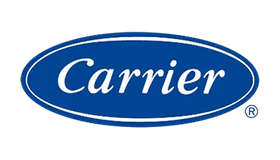Types of AC Systems
Types of Residential Air Conditioning Systems in Florida
Whether you are replacing an older AC system or deciding on options for a new home, it’s easy to be puzzled by all the cooling options available today. The certified Sarasota AC technicians at Custom Climate Systems can help you choose the system that is right for your home and needs in Sarasota or Manatee county.
More than 85% of Florida homes use a central air-conditioning system and that system accounts for 27% of the energy consumed in our state. A central air conditioner can be a split-system unit or a packaged unit.


Understanding The Parts Of An Air Conditioning System
You will notice that the different types have all the same components but they are positioned or configured differently.
Split Air Conditioning Systems (Typically a Heat Pump)
A split system is the most common type of central air conditioner found in Florida and the entire U.S. As the name implies, it consists of two major parts. Outside, a large metal cabinet contains the condenser and compressor. Inside, tucked in a cabinet, is a fan-and-coil system that removes heat and moisture from the air. Pipes that carry refrigerant connect the two. The refrigerant cools the air, dehumidifying it in the process; a blower circulates air through ducts throughout the house. A thermostat maintains the temperature at the setting you select.
Good to Know
Packaged AC Unit or Packaged System
Packaged systems are essentially a combination of everything all in one place. Only one cabinet contains the evaporator, condenser, blower and compressor. Usually located outdoors, the cabinet can be placed on a roof or on a concrete slab next to a house’s foundation. The packaged AC is connected to the indoor air supply and return ducts through a home’s exterior wall or roof. Packaged systems often include electric heating coils or a natural gas furnace for when heat is needed.
Good to Know
Mini-Split System or Ductless System
Like a basic split system, a mini-split AC system has two main components: an outdoor compressor/condenser and an indoor air-handling unit. A conduit, which houses the power cable, refrigerant tubing, suction tubing, and a condensate drain links the outdoor and indoor units. A mini-split AC system is most commonly used for retrofit add-ons to houses without and ductwork or multifamily housing. They can also be a good choice for room additions and small apartments, where extending or installing distribution ductwork (for a central air-conditioner) is not feasible.
Good to Know
Room / Window Air Conditioners
Window air conditioners are markedly different than central ACs. They are single units that contain a condenser, evaporator, thermostat and fan. A window unit is designed to be wedged into a window frame so it can vent to the outside. A window AC is most effectively used to cool single rooms. While they cost only a fraction of what a central AC unit would cost, in Florida it will likely take a central AC system to cool an entire house.
Good to Know
Family Owned • Family Operated • Family Values





